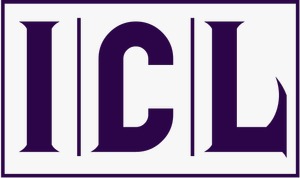Challenges to Learning a Second Language: What do the University Students of Islamabad City Think?
Keywords:
Second language learning, Islamabad, University studentsAbstract
Language learning is a multifaceted process that implies a range of internal and external learner-based dimensions. Although numerous empirical studies have been conducted to acquire knowledge on second language acquisition, one of the neglected areas involves the identification of socio-cultural barriers in Pakistani people. The current research proposal was intended to fill this gap by conducting a qualitative study analyzing the issues of second language learners in Islamabad. In the present investigation, we analyze the hurdles of university students in Islamabad encounter while attempting to acquire Second language acquisition especially in English language. This research investigates the major problems learners face in their journey to reach fluency in English. From the learners' responses given analysis of themes located several main obstacles which are that pronunciation is hard to get, there is widespread laziness and insufficient resources for study. Large classes and the learners' L1 (first language) have compounded these obstacles, so that making individualized attention paid one's owned an even heavier burden than it already was before. Nevertheless, by making use of effective techniques such as daily practice, getting involved with English media and working with others who are also learning, it is possible to overcome those problems and improve one's language. More profound repercussions to these findings underscore the urgency of designing specific curricula tailored to suit the needs of individual learners, offering extra incentives and resources - which enable them tackle complexities in English language learning successfully.
References
Abbas, S. (1998). Sociopolitical Dimensions in Language: English in Context in Pakistan. Journal of Applied Language Studies, 23, 42.
Alderson, J.C. (2004). Foreword. In: Cheng, L., Watanabe, Y. & Curtis, A., Eds., Washback in Language Testing: Research Contexts and Methods, Lawrence Erlbaum, London, ix-xii.
Brown, H. D. (1994). Principles of Language Learning Teaching. New Jersey: Prentice Hall. Brown, H. D. (2001). Teaching by Principles: An Interactive Approach to Language Pedagogy. New York: Pearson Longman.
Bhatti, A. M., Hussain, Z., Azim, M. U., & Gulfam, G. Q. (2020). Perceptions of ESL learners and teachers on writing difficulties in English language learning in Lahore. International Bulletin of Literature and Linguistics, 3(3), 11-24.
Celce-Murcia, M. (2001). Teaching English as a Second or foreign Language. 3rd Edition, Heinle & Heinle Publisher, Boston.
Chomsky, N. (1965). Aspects of the Theory of Syntax. MIT Press, Mass, 5-6.
Cummins, J. (1984). Bilingualism in Education: Aspects of Theory. Research and Practice. Longman, London.
Demircan, Ö. (1988). DündenbugüneTürkiye’deyabancıdil [Foreign Languages in Turkey: From Past to Today]. Remzi Kitabevi, İstanbul.
Foddy, W.H. (1994). Constructing Questions for Interviews and Questionnaires: Theory and Practice in Social Research. New Edition, Cambridge University Press, Cambridge, UK.
Foertsch (1998). Second Language Learning. North Central Regional Educational Laboratory, Learning Point Associates.
Gass, S.M. & Schachter, J. (Eds.) (1989). Linguistic Perspectives on Second Language Acquisition. New York: Cambridge University Press. http://dx.doi.org/10.1017/CBO9781139524544
Gibbs, G. & Jenkins, A. (1992). Teaching Large Classes in Higher Education: How to Maintain Quality with Reduced Resources. Kogan Page, London.
Gumperz, J.J. & Dill, A.S. (1971). Language in Social Groups. Stanford University Press, Stanford.
Horwitz, E.K., Horwitz, M.B. & Cope, J.A. (1986). Foreign Language Classroom Anxiety. The Modern Language Journal, 70, 125-132. http://dx.doi.org/10.1111/j.1540-4781.1986.tb05256.x
ITS. (n.d.). Tutorial School. Retrieved from http://www.tuition.com.hk/academic/concept.htm
Kannan, R. (2009). Difficulties in Learning English as a Second Language. Vol. 8, ESP World. Retrieved from www.esp-world.info
Krashen, S.D. (1981). Second Language Acquisition and Second Language Learning. Pergamon Press Inc., Oxford.
Lado, R. (1957). Linguistics across Cultures: Applied Linguistics and Language Teachers. University of Michigan Press, Ann Arbor.
Malik, F.J. (1996). The Teaching of English in Pakistan: A Study in Teacher Education. Vanguard, Lahore.
Mansoor, S. (2003). Language Planning in Higher Education: Issues of Access and Equity. The Lahore Journal of Economics, 8, 19.
Mansoor, S. (2004). The Status and Role of Regional Languages in Higher Education in Pakistan. Journal of Multilingual and Multicultural Development, 25, 333-353.
Mansoor, S., Zafar, M., Hussain, N., Sikandar, A., Azam, S.I., & Tatari, S.K. (2005). English and Employment in Pakistan. Unpublished Summary Report, Aga Khan University, Centre of English Language, Karachi.
Marshall, C. & Rossman, G.B. (2006). Designing Qualitative Research. Sage Publications, Thousand Oaks.
Memon, G.R. (2007). Education in Pakistan: The Key Issues, Problems and the New Challenges. Journal of Management and Social Sciences, 3, 47-55.
NEC (2005). National Education Census 2005 Pakistan. Retrieved from http://www.gilanifoundation.com/homepage/Free_Pub/EDU/NATIONAL_EDUCATION_CENSUS_2005_Pakistan.pdf
Partridge, B. & Starfield, S. (2007). Thesis and Dissertation Writing in Second Language. Routledge, London.
Rahman, T. (2002). Language, Idealogy and Power. Oxford University Press, Karachi.
Rahman, T. (2006). Language Policy, Multilingualism and Language Vitality in Pakistan. Trends in Linguistics Studies and Monographs, 175, 73.
Shamim, F. (2008). Trends, Issues and Challenges in English Language Education in Pakistan. Asia Pacific Journal of Education. Retrieved from http://www.informaworld.com/smpp/title~content=t713724324 http://dx.doi.org/10.1080/02188790802267324
Shahzadi, K., Irfan, H., & Bhatti, A. M. (2022). Fun activities in the learning process. Asia Journal of Management and Social Science, 1(02), 8-12.
Shahzadi, K., Irfan, H., & Bhatti, A. M. (2022). Cultural and linguistic diversity in ESL learning to Pakistani university students: World English perspective. Jahan-e-Tehqeeq, 5(2), 239-249.
Taylor, L. (2006). The Changing Landscape of English Implications for Language Assessment. ELT Journal, 60, 51-60.
Xu, Z. (2001). Problems and Strategies of Teaching English in Large Classes in the People’s Republic of China. In: Herrman, A. & Kulski, M.M., Eds., Expending Horizons in Teaching and Learning, Proceedings of the 10th Annual Teaching Learning Forum, 7-9 February 2001, Curtin University of Technology, Perth, 7-9.
Downloads
Published
How to Cite
Issue
Section
License

This work is licensed under a Creative Commons Attribution-NonCommercial-NoDerivatives 4.0 International License.

